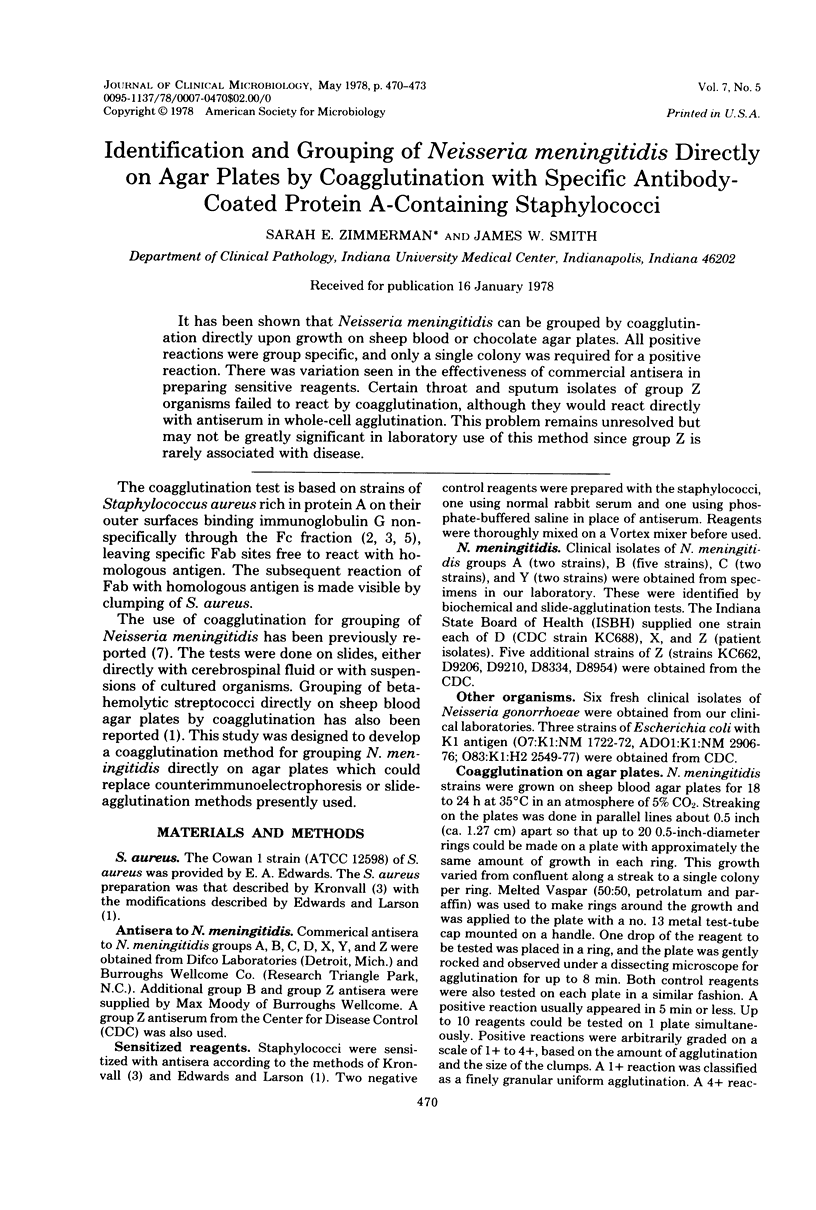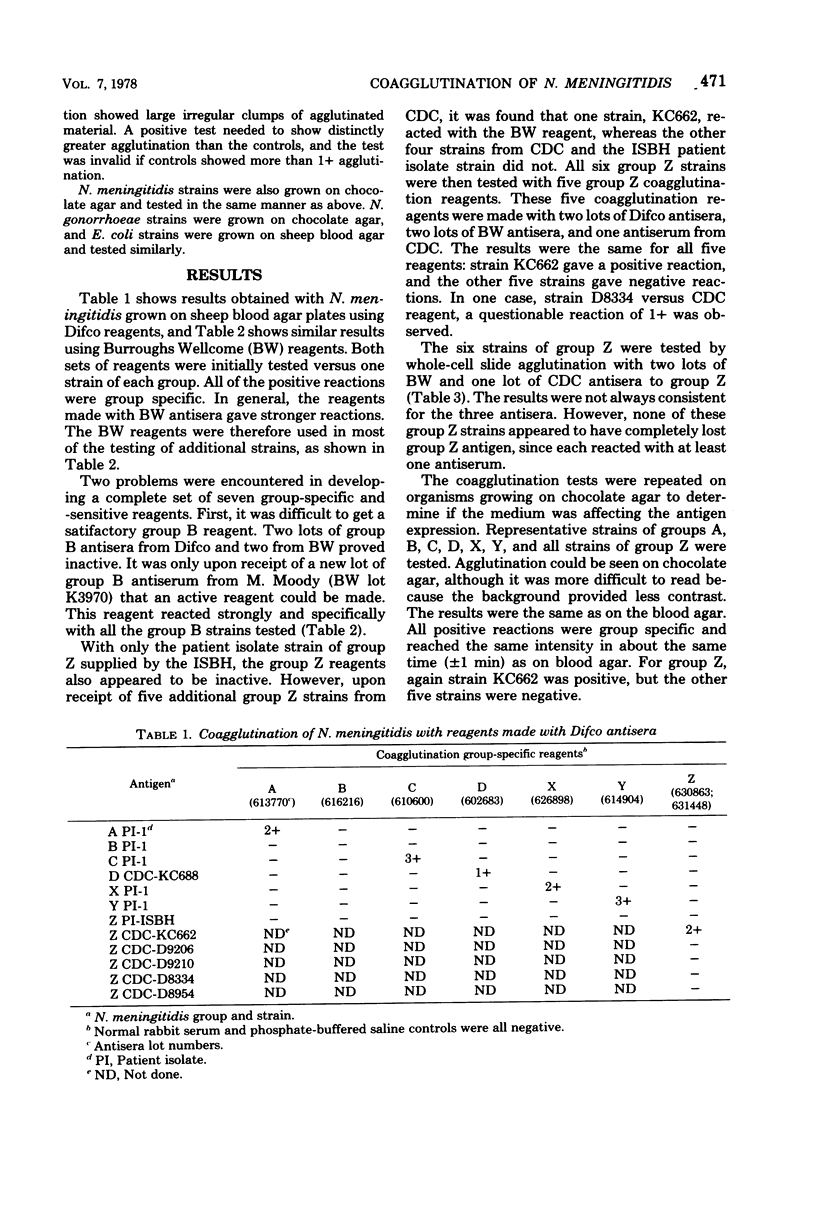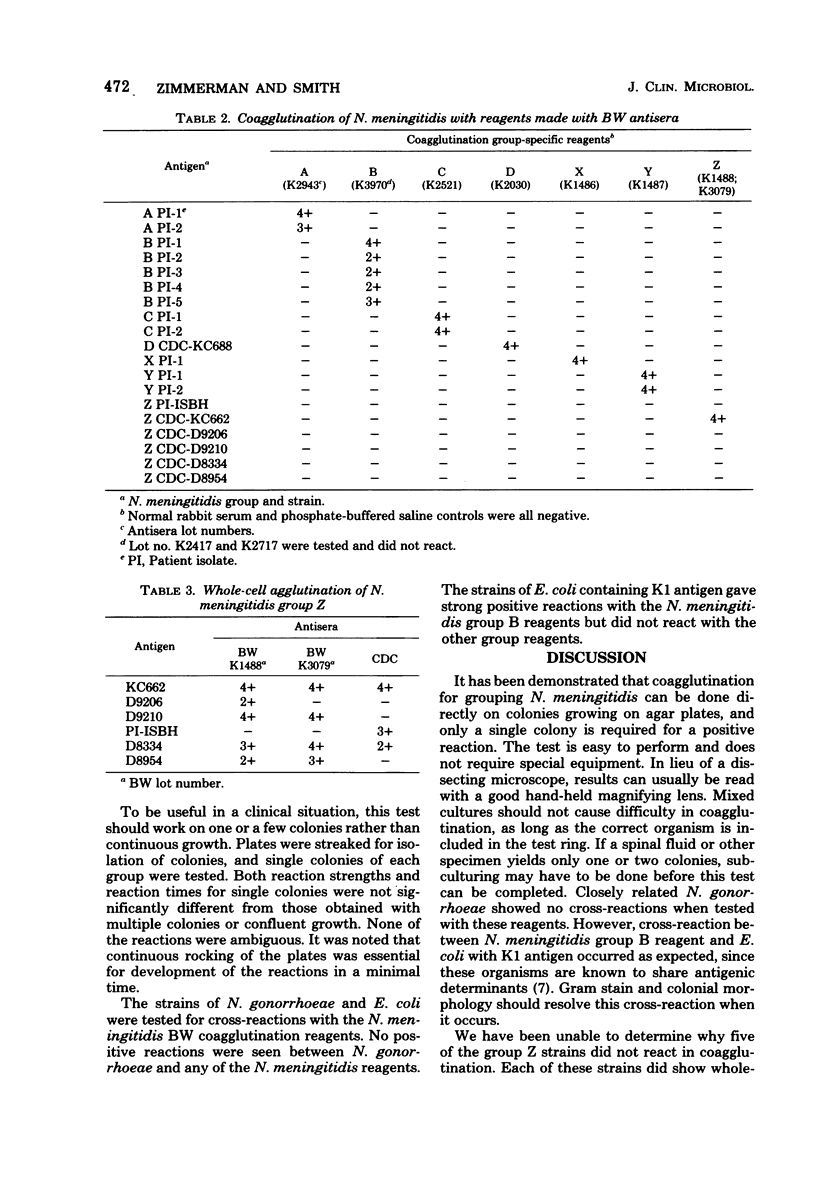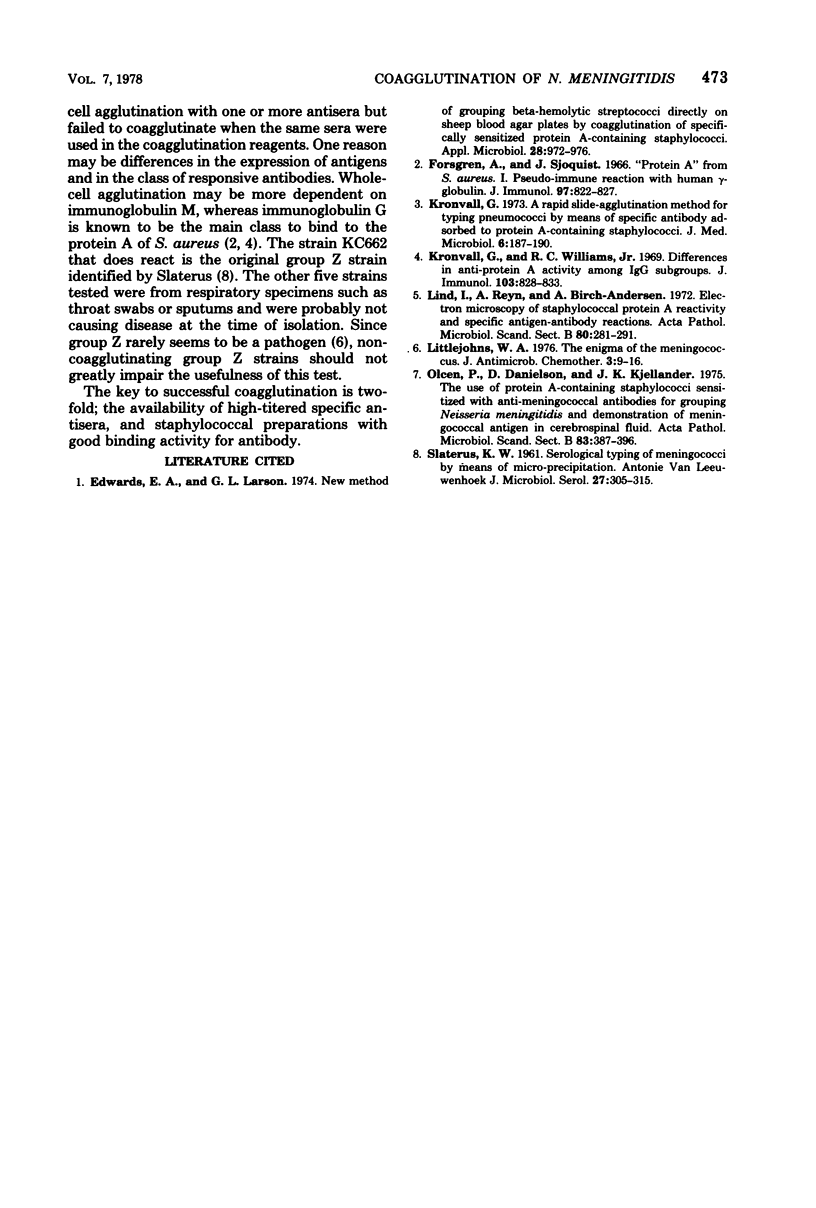Abstract
It has been shown that Neisseria meningitidis can be grouped by coagglutination directly upon growth on sheep blood or chocolate agar plates. All positive reactions were group specific, and only a single colony was required for a positive reaction. There was variation seen in the effectiveness of commercial antisera in preparing sensitive reagents. Certain throat and sputum isolates of group Z organisms failed to react by coagglutination, although they would react directly with antiserum in whole-cell agglutination. This problem remains unresolved but may not be greatly significant in laboratory use of this method since group Z is rarely associated with disease.
Full text
PDF



Selected References
These references are in PubMed. This may not be the complete list of references from this article.
- Edwards E. A., Larson G. L. New method of grouping beta-hemolytic streptococci directly on sheep blood agar plates by coagglutination of specifically sensitized protein A-containing staphylococci. Appl Microbiol. 1974 Dec;28(6):972–976. doi: 10.1128/am.28.6.972-976.1974. [DOI] [PMC free article] [PubMed] [Google Scholar]
- Forsgren A., Sjöquist J. "Protein A" from S. aureus. I. Pseudo-immune reaction with human gamma-globulin. J Immunol. 1966 Dec;97(6):822–827. [PubMed] [Google Scholar]
- Kronvall G. A rapid slide-agglutination method for typing pneumococci by means of specific antibody adsorbed to protein A-containing staphylococci. J Med Microbiol. 1973 May;6(2):187–190. doi: 10.1099/00222615-6-2-187. [DOI] [PubMed] [Google Scholar]
- Kronvall G., Williams R. C., Jr Differences in anti-protein A activity among IgG subgroups. J Immunol. 1969 Oct;103(4):828–833. [PubMed] [Google Scholar]
- Lind I., Reyn A., Birch-Andersen A. Electron microscopy of staphylococcal protein A reactivity and specific antigen-antibody reactions. Acta Pathol Microbiol Scand B Microbiol Immunol. 1972;80(2):281–291. doi: 10.1111/j.1699-0463.1972.tb00161.x. [DOI] [PubMed] [Google Scholar]
- Littlejohns W. A. The enigma of the meningococcus. J Antimicrob Chemother. 1977 Jan;3(1):9–16. doi: 10.1093/jac/3.1.9. [DOI] [PubMed] [Google Scholar]
- Olcén P., Danielsson D., Kjellander J. The use of protein A-containing staphylococci sensitized with anti-meningococcal antibodies for grouping Neisseria meningitidis and demonstration of meningococcal antigen in cerebrospinal fluid. Acta Pathol Microbiol Scand B. 1975 Aug;83(4):387–396. doi: 10.1111/j.1699-0463.1975.tb00117.x. [DOI] [PubMed] [Google Scholar]
- SLATERUS K. W. Serological typing of meningococci by means of micro-precipitation. Antonie Van Leeuwenhoek. 1961;27:305–315. doi: 10.1007/BF02538460. [DOI] [PubMed] [Google Scholar]


